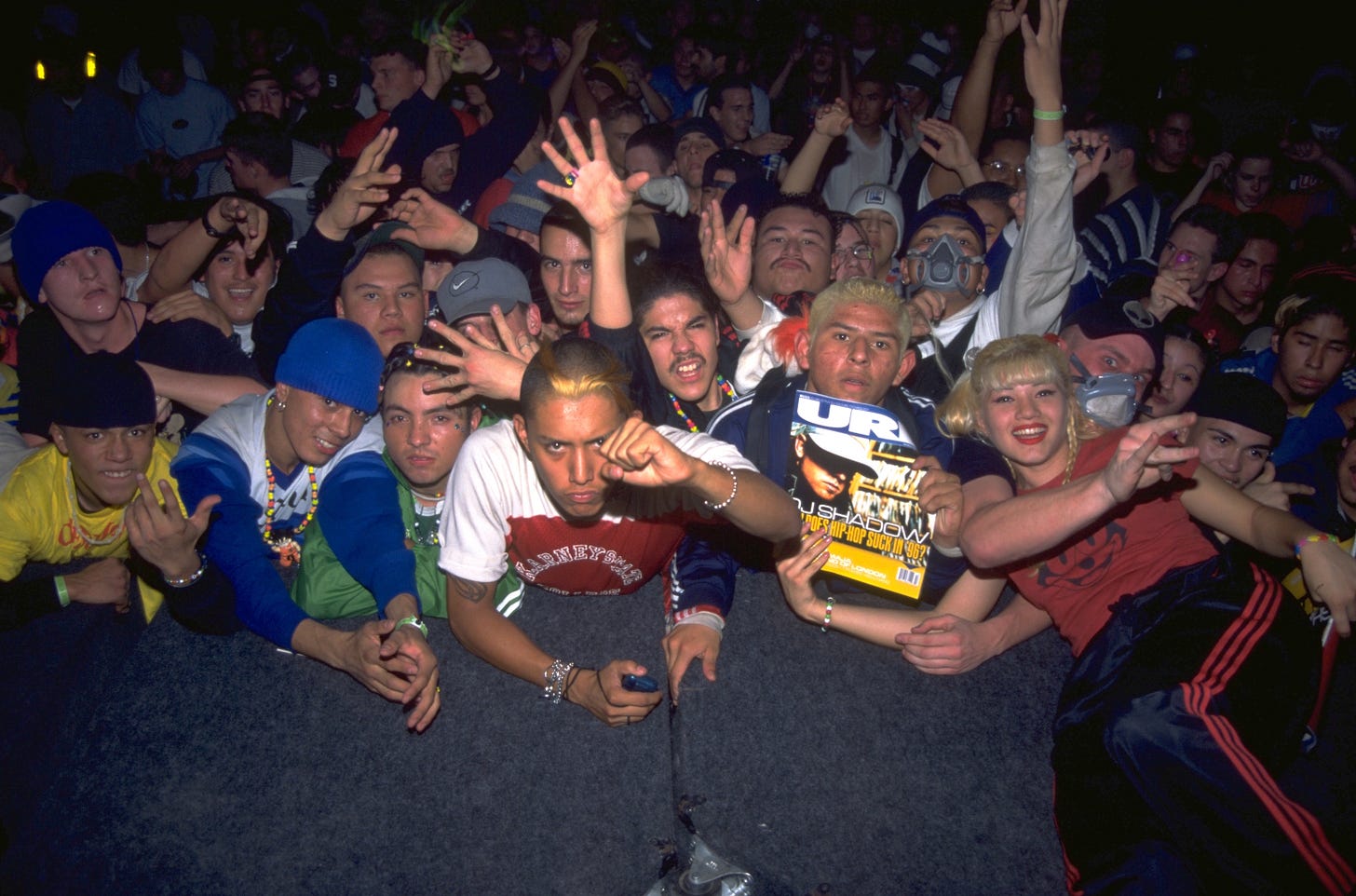My Substack Story Begins with Failure
The end of ink on paper made sense, but it left a huge digital hole
URB’s last issue rolled off the presses in the Spring of 2009 with our 15th Annual NEXT 100. That year’s list included Drake, Temper Trap, Freddie Gibbs, and Miike Snow. Once the brash upstarts at the dawn of a ’90s indie publishing heyday, we were now on life support. The desktop publishing disruption we helped ignite was never destined to be permanent. The celebrated indie ‘zine of “Paper, Ink, & Soul,” I birthed with my friend Mark Bankins 20 years earlier, had run out of steam in an excruciating, drawn-out demise caused by mismanagement and a global economic meltdown.
We moved out of our Wilshire Blvd. offices—once a sign that we’d made it as real publishers—and back into my home, albeit now a house and not a studio apartment. With the help of committed volunteers, we continued to publish online for the next few years, but my company had dissolved, and I was out of money. Outwardly, I put on a brave, even optimistic face, writing this editorial and trumpeting the re-imagined URB.com, but inside, this felt like the ultimate personal failure.
“I couldn’t have remotely imagined [the Internet] when URB began. But looking back, we were shifting our own paradigms of the day. For our readers, we were a de facto blog long before the term would be born. Our pages were the first to spread the word about emerging bands, artists, and DJs. The record reviews we printed shifted album sales much like a Pitchfork review moves the iTunes needle today. Our club and event pages were The Cobra Snake of their time. And we were a rowdy town hall, from our letters pages to our rant-ready voicemail number, where readers would spout off about last night’s party . . . URB Magazine was where the coolest kids spent their time.”
—Raymond Leon Roker, October 8, 2009
At the time, it would have been easy to blame our closure on the well-documented conditions in the macro economy, especially the demise of music magazines. Some blogs treated the death of music mags in the same dismissive tone we had for legacy media in the early ‘90s, and could I blame them? Music fans no longer needed editorial pages introducing them to new sounds when streaming made everything instantly accessible. Instagram made expensive magazine photo shoots seem excessive. And artists increasingly had their own media channels, so they were less beholden even to participate in publicity unless they could dictate the terms.
After our last issue, I licked my wounds and reinvented myself for the corporate world. It was humbling, but I was grateful to find new outlets for storytelling. I landed at Red Bull’s Media House first (ironically helping to launch a print magazine, the ambitious and spirited Red Bulletin), then onto the renowned Coachella Valley Music & Arts Festival, where my tenure culminated with this ode to music culture and a nice cameo for URB. At the start of the pandemic lockdown, I was recruited to be Amazon Music’s global head of editorial. At each of these junctures, I was fortunate to create roles that allowed me to shed light on pockets of sounds and culture that deserved attention, as we did with URB for two decades. Still, I was longing to return to creative independence, something I struggled to find at “work” or impossible to manifest in my “downtime.” I had walked away from my magazine but still felt the urge to unlock the countless stories and images buried in our pages.

Our day-one mission
When my co-founder Mark came to me in the Spring of 1990 with a crazy suggestion to start a magazine on computer graphics, I had a different and very personal vision of what it should encompass. I was part of a fledgling underground scene, and I knew, even back then, that documentation was essential. I wanted to capture this culture in a legitimate and high-quality way, so our story would endure in all its glory. The URB blueprint was a snapshot of my brain at the time, reflecting this brave new world.
Surprisingly, my panoramic view of culture found a receptive audience. Since our hiatus, the magazine’s 20-year archive has been locked away, at risk of being lost to time. We often take it for granted that history is automatically preserved, but it takes a concerted effort to collect, protect, and save it. The ‘90s and ‘00s were also a wonky proto-digital-analog hybrid that resulted in precarious electronic record-keeping in both publishers' hands—many made hasty shifts to digital or disappeared altogether—and private citizens with sketchy hard drives. The result is decades of media suspended somewhere between print and some interim state of electronic preservation.
The URB Archive, which has existed publically only as a splash page for the past several years (or on eBay), should become part of the permanent record, lest it is left to educated guesses by well-meaning scholars or cultural charlatans who never set foot in a rave. I’m interested in celebrating what we collectively built by protecting its history. Admittedly the “how” is still a work in progress, but I believe this Substack is a meaningful first step.
What’s in the archive? For starters, every print issue from December 1990 onward. Thousands of photographs from reader-submitted scene snaps to curated pictorials and artist portraits by some of the best image makers in print. Early-’90s rave reports that live only on our oversized newsprint pages. First cover stories on DJ Shadow, Moby, Fugees, Black Star, Diplo, Goldie, Janelle Monáe, and numerous others. Thousands of articles—including those by Oscar winner Joseph “Jazzbo” Patel, authors Jeff Chang, Hua Hsu, and Oliver “O-Dub” Wang, plus myself and countless other contributors who left their imprint by witnessing and capturing moments and ideas.
Why Substack?
As a solo founder/creator, this platform doesn’t require a ton of resources such as design, programming, or social strategy. It provides a direct channel to fans and followers—and gives them (you!) an opportunity to engage. Substack isn’t as expansive and exhausting as social media, and my posts aren’t trying to compete with the latest viral trend. I love social for cultural observation, humor, and information gathering, but I didn’t want to entrust my goals to those platforms' whims. And Substack will allow you to support my efforts by subscribing for free or paid. I hope what we’re doing here inspires you, provides healthy nostalgia, and shows you something fresh.
As I wrote in every masthead, “Exploit technology before it exploits you.” This new digital adventure is the next phase of living up to those words. I am grateful to once again be, as my 11-year-old calls, a full-time content creator. I’ll be honest; I have no idea if this is interesting to an audience of 200 or 20,000. But I’d love to hear from you and what you’re curious about. How should the archive come to life, and what are you most interested in seeing? Hit me with a comment, and if you like what we’re doing, please tell a friend.










Always there...still in Raymond! :-)
“URB Magazine was where the coolest kids spent their time.” Truer words never spoken 🔊🔊🔊🔊🔊